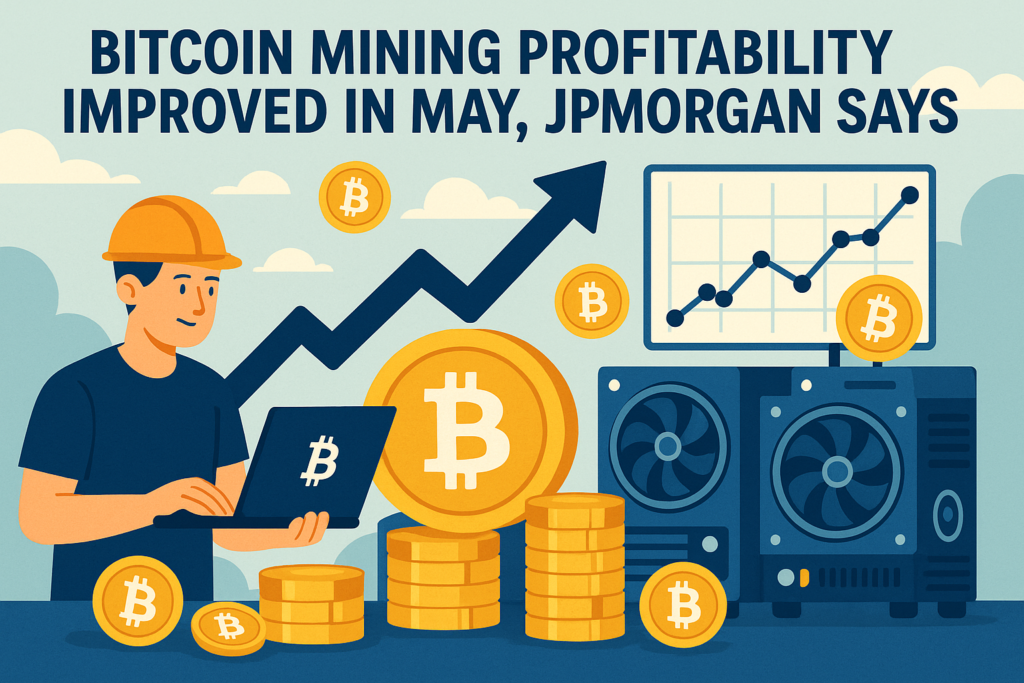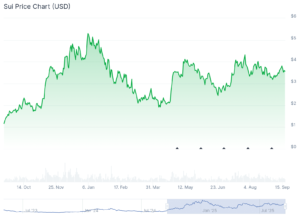Bitcoin Mining Profitability Improved in May, JPMorgan Says

Introduction
Although retail traders and traditional media remain fixated on the price volatility of Bitcoin (BTC), experienced investors understand that the heartbeat of the cryptocurrency ecosystem pulses deeper—in mining profitability. May 2024 delivered pivotal insight into the underlying health of the Bitcoin network with a fresh JPMorgan report revealing a solid recovery in miner earnings. Amid the noise of market speculation, this less-publicized shift signals an emergent trend bubbling beneath the surface—one that contrarian and seasoned crypto investors are watching closely. With the halving event in the rear-view mirror and the markets digesting macroeconomic shifts, improvements in mining profitability could very well be the harbinger of the next leg up in the Bitcoin cycle.
Analysis of Bitcoin Mining Profitability in May
May 2024 represented a turning point for the Bitcoin mining sector. After months of compression in margins and post-halving uncertainty, several developments converged to create a more supportive operating environment for miners. These underlying improvements played a critical role not only in firming up revenue but also in signaling a potential macro trend reversal.
- Stable Energy Prices: One of the biggest constraints on mining profitability has always been energy costs. In May, the global decline in fossil fuel prices and the increasing integration of renewable energy sources allowed mining facilities—especially those in North America and Scandinavia—to reduce their operational expenses. The average break-even cost per Bitcoin dropped as energy efficiency improved, leading to an estimated increase in profit margins by as much as 15% week-over-week over the month.
- Hash Rate Stabilization: During Q1, the hash rate had climbed rapidly as new entrants raced to capitalize on halving-induced supply constraints. However, May saw a notable slowdown in hash rate growth, alleviating upward pressure on mining difficulty. This stabilization offered a welcome reprieve for existing operations, allowing them to mine blocks more efficiently and at higher per-terahash output, ultimately translating to greater profitability even without significant price appreciation in BTC.
- BTC Price Support: Despite market-wide volatility, Bitcoin managed to hold firm above the psychologically critical $60,000 mark. This price resilience ensured that Block rewards—even post-halving—remained sufficiently lucrative to incentivize ongoing mining efforts. Additionally, while on-chain transaction fees dipped slightly as congestion eased, the steady base block reward upheld revenue consistency, especially for high-efficiency operators using next-generation ASIC miners.
- Institutional Scaling: Publicly traded mining enterprises such as Riot Platforms and Core Scientific leveraged favorable conditions to initiate strategic expansion plans. Backed by strong balance sheets and access to institutional capital, these firms prioritized integrating newer ASIC units with stronger performance-per-watt profiles, creating long-term advantages that exceed the impact of short-term price dips or network congestion.
Combined, these elements provided a breather to miners who struggled to remain profitable in late 2023 amid intensifying competition and less favorable macroeconomic backdrops. Importantly, elite miners are now in a position to re-invest into infrastructure, positioning themselves for robustness in the face of any future hash rate surges.
JPMorgan’s Perspective on Bitcoin Mining
JPMorgan’s industry commentary on Bitcoin mining profitability in May 2024 pointed toward an emerging consolidation trend among industrial-scale miners. The report indicated a marked uptick in average profitability metrics, with mining revenue per kilowatt-hour rising from $0.074 in April to $0.095 in May—a nearly 30% increase in a single month. While this figure remains under peak bull-cycle levels, it is a robust recovery that suggests many miners are once again operating above breakeven thresholds.
Moreover, JPMorgan emphasized a behavioral shift among publicly listed miners: a growing number of firms are opting to retain mined Bitcoin on their balance sheets rather than liquidating into fiat markets. This Bitcoin-hoarding movement echoes patterns seen in 2020 and early 2021, moments that immediately preceded major upward price momentum. Rather than converting mined BTC to finance operations, these actors are using fiat reserves and credit lines—indicative of long-term confidence in price appreciation.
However, the JPMorgan analysis includes a strategic warning: the profitability bump may be time-sensitive. The report notes that if hash rate resumes aggressive growth—as new hardware installations come online mid-to-late Q3—or if Bitcoin’s price fails to break resistance levels, margin compression could return. Consequently, mining firms must prioritize energy efficiency and operational scalability to preserve gains made in May.
This nuanced shift in strategy reflects broader market maturation. Mining companies are no longer simply reacting to BTC’s price—they’re actively managing treasury strategies based on macro and micro indicators, reinforcing the narrative of Bitcoin transitioning into a more institutional-backed asset class.
Implications for Investors
Understanding mining profitability isn’t just for miners—it’s equally vital for discerning investors looking for asymmetric opportunities in the digital asset sector. While the broader population continues speculating on “hot” altcoins and chasing short-term trading trends, savvy investors recognize that mining economics often act as leading indicators for future price action. Historically, increased miner profitability has preceded major Bitcoin rallies by 4 to 6 weeks.
Here are several actionable insights for investors looking to position themselves ahead of the curve:
- Explore Miner-Related Equities: Mining firms like CleanSpark (CLSK), Marathon Digital Holdings (MARA), and Bitfarms (BITF) allow investors to gain leveraged exposure to Bitcoin’s performance through operational profitability. During times of improving margins, these stocks often outperform Bitcoin itself due to embedded earnings multipliers. Investors looking for exposure without holding BTC directly may find this route both practical and profitable.
- Diversify into Mining Infrastructure Tokens: Decentralized projects like Flux, which supports distributed computing, and Kadena, a scalable proof-of-work network, offer innovative takes on mining’s future. These networks combine blockchain security with Web3 infrastructure and power user-owned ecosystems. As the demand for decentralized infrastructure grows, these platforms are poised to benefit not just from improved economics but from expanding network relevance as well.
- Monitor Hash Rate and Profitability Metrics: Consider tracking open-source data from providers like Glassnode, Hashrate Index, and Coin Metrics. Watching shifts in hash rate, difficulty level, and miner revenue gives insight into behind-the-scenes dynamics that often hint at where price is heading next. For instance, a rise in miner hoarding tendencies can signal institutional confidence well before media narratives catch on.
With JPMorgan’s alignment to this deeper narrative, the writing may already be on the wall. The renewed miner profitability isn’t isolated—it’s an ecosystem-wide adjustment. Investors who can spot these inflection points, before they’re fully priced in, often stand to benefit the most.
Conclusion
The sharp improvement in Bitcoin mining profitability during May 2024 is more than a rebound—it represents a keystone event that may mark the foundation of a broader bullish cycle. From falling energy costs and flatlining hash rates to institutional miners playing the long game by holding mined BTC, the signs are increasingly difficult to ignore.
While the masses remain glued to price charts and speculative memecoins, the quiet professionals are observing margin expansions and mining wallet behaviors. These are the signals that consistently precede major momentum shifts in the digital asset space. Historically, periods of miner accumulation and rising revenue have laid the groundwork for explosive price action, and the current environment shares all of those hallmarks.
For those not yet paying attention to the mining narrative, it’s not too late—but the window may not remain open for long. The smart money is watching the deep metrics. They’re not just investing in coins—they’re investing in infrastructure, energy, and long-term network security. That’s where the edge often lies in cryptocurrency investing today.
So, while others chase fleeting trends, adopt a contrarian strategy: follow the hash. When miner margins begin to ascend, historically, price action has rarely been far behind. Let the noise of the market distract the herd—savvy investors know the next chapter of the Bitcoin catalyst is already being written in the block rewards.






